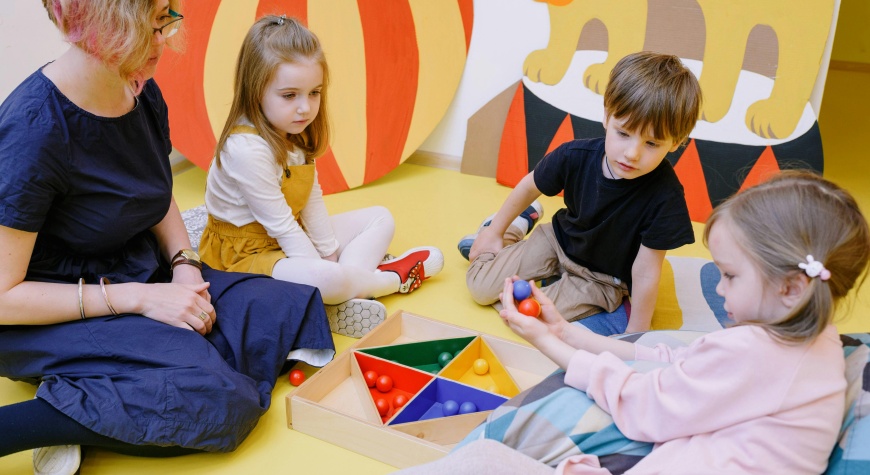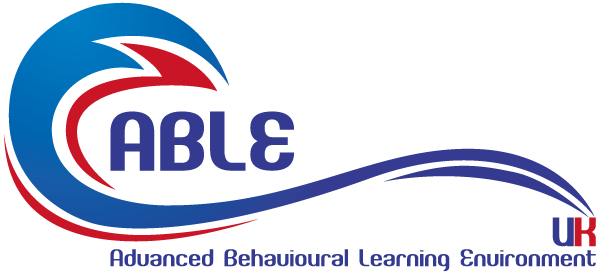Signs Your Child May Benefit from ABA Therapy

Applied Behavior Analysis (ABA) therapy is a highly researched and evidence-based approach that helps individuals learn new skills and reduce challenging behaviors. It’s about understanding why certain behaviors happen and then teaching more effective, positive ways for a child to navigate their world. While it’s most commonly associated with supporting children on the autism spectrum, its principles can be applied to a wider range of developmental and behavioral needs.
As parents, we spend so much time watching our children grow, celebrating every milestone, and sometimes worrying when things don’t seem to unfold quite as expected. It’s natural to compare our child’s development to that of their peers, and equally natural to wonder if a particular behavior is “just a phase” or something that needs a closer look.
When it comes to a child’s learning, communication, and social interactions, sometimes a bit of extra support can make a world of difference. If you’ve been noticing some consistent patterns in your child’s development or behavior that give you pause, understanding the signs that might point to a benefit from ABA therapy can be incredibly helpful. This isn’t about rushing to conclusions, but about being informed so you can make the best decisions for your child’s unique journey.
Communication Challenges
One of the most common areas where ABA therapy can offer significant support is in communication. This isn’t just about speaking words; it’s about the entire way a child expresses themselves and understands others.
- Delayed or Limited Speech: Is your child not using as many words as other children their age? Do they struggle to form sentences, or do they only use single words when their peers are combining them? Early indicators often include a lack of or delayed response to their name being called, or not using words by typical developmental milestones. If a toddler isn’t babbling, imitating sounds, or trying to communicate verbally, it might be a sign to investigate further.
- Difficulty Expressing Needs and Wants: Does your child get very frustrated because they can’t tell you what they want or need? This can lead to meltdowns, crying, or other challenging behaviors. ABA focuses on teaching functional communication, helping children learn to ask for things directly, whether through words, gestures, pictures (like PECS – Picture Exchange Communication System), or even communication devices. The goal is to replace challenging behaviors with clear ways to communicate.
- Trouble Understanding Others: Communication is a two-way street. Does your child struggle to follow instructions, even simple ones? Do they seem to miss what you’re saying, or have difficulty understanding questions? ABA can help improve receptive language skills, which means better understanding of spoken language.
- Limited Non-Verbal Communication: Communication isn’t just words. Does your child struggle with eye contact, gestures, or using facial expressions to convey meaning? Do they have difficulty interpreting these cues from others? These non-verbal elements are crucial for social interaction.
Social Interaction Difficulties
Making friends, playing with others, and navigating social situations can be complex. If your child struggles with these, ABA can provide targeted strategies.
- Difficulty Making Friends or Playing with Peers: Does your child prefer to play alone, even when other children are around? Do they seem uninterested in interacting with others, or struggle to join in group activities? Children with autism often face challenges with initiating social contact.
- Challenges with Social Cues: Do they struggle to understand body language, facial expressions, or tone of voice? This can make it hard for them to know how others are feeling or how to respond appropriately in social situations. ABA can systematically teach these skills, often through role-playing and structured play.
- Limited Shared Attention: When you point to something interesting, does your child look where you’re pointing? Do they bring you things to show you, or try to share their excitement about something? Joint attention, or shared attention, is a critical precursor to social development and can be an area where support is needed.
- Repetitive or Restrictive Play: While all children have preferred ways to play, does your child engage in repetitive play patterns (e.g., lining up toys, spinning wheels) and resist engaging in imaginative or varied play with others? ABA can help broaden play skills and encourage more interactive play.
Repetitive Behaviors and Restricted Interests
Some behaviors can become habits that interfere with a child’s learning or ability to engage with their environment.
- Repetitive Movements (Stimming): Does your child frequently engage in repetitive actions like hand flapping, rocking, spinning, or toe-walking? While these can be self-soothing, if they interfere significantly with learning or daily activities, ABA can help teach more functional ways to self-regulate or manage sensory input.
- Intense or Obsessive Interests: Does your child have a very intense focus on specific objects, topics, or routines, to the exclusion of other activities or interactions? While passion is wonderful, if it significantly restricts their world or makes transitions incredibly difficult, it may be an area for support.
- Strong Need for Routine and Difficulty with Change: Does your child become highly distressed by small changes in routine or environment? Transitions between activities or locations can be very challenging. ABA can help children build flexibility and cope with uncertainty through strategies like visual schedules and communication.
Challenging Behaviors
All children have tantrums, but when certain behaviors become frequent, intense, or interfere with safety or learning, it’s time to consider intervention.
- Frequent or Intense Tantrums: Do tantrums seem out of proportion to the situation, last for a very long time, or occur daily? ABA seeks to understand the function of these behaviors – what the child is trying to communicate or achieve – and then teach more appropriate replacement behaviors.
- Aggression or Self-Injurious Behaviors: Does your child hit, bite, kick, or engage in behaviors that could harm themselves (e.g., head banging, scratching)? These behaviors are often a cry for help or a way to communicate unmet needs. ABA therapy provides strategies to reduce these behaviors by teaching alternative ways to communicate or cope.
- Elopement (Running Away): Does your child frequently run away from safe environments, such as a classroom, therapist, or caregiver? This is often an escape behavior, and ABA can help identify the triggers and teach skills to safely communicate a desire to leave or take a break.
- Difficulty Tolerating “No” or Waiting: Is it very hard for your child to accept when they can’t have something, or to wait their turn? Learning to tolerate frustration and delay gratification are important life skills that ABA can address.
Daily Living and Learning Skills
Beyond social and communication, ABA also supports the development of crucial independent living and academic readiness skills.
- Self-Care Challenges: Does your child struggle with age-appropriate self-care tasks like dressing, toileting, brushing teeth, or feeding themselves? ABA breaks these complex tasks down into smaller, manageable steps, teaching each step systematically with positive reinforcement.
- Difficulty with Learning Readiness: In a classroom setting, does your child struggle with sitting still, attending to tasks, following group instructions, or initiating learning activities? ABA can help build these foundational “learner readiness” skills that are essential for academic success.
- Motor Skills: For some children, fine or gross motor skills may also be an area where ABA, often in collaboration with occupational or physical therapy, can provide support to improve coordination and movement.
When to Consider a Consultation
If you’ve recognized several of these signs in your child, it’s a good idea to speak with your pediatrician or a developmental specialist. They can offer guidance and, if appropriate, recommend a comprehensive evaluation. This evaluation can help determine if your child has a developmental difference, such as Autism Spectrum Disorder (ASD), or other behavioral needs for which ABA therapy would be beneficial.
It’s important to remember that every child is unique, and developmental paths vary widely. However, research consistently shows that early intervention is incredibly powerful, particularly for children with autism. Starting ABA therapy at a younger age (often before age 3) can lead to more significant improvements in communication, social skills, and overall quality of life. The brain’s plasticity in early childhood makes it particularly receptive to learning new skills.
ABA therapy is highly individualized, meaning a qualified Board Certified Behavior Analyst (BCBA) will create a program tailored specifically to your child’s strengths and areas for growth. It often involves intensive, one-on-one instruction, but also incorporates natural environment teaching and generalizes skills to everyday settings, with significant family involvement.
Seeing signs that your child might benefit from specialized support isn’t a setback; it’s an opportunity. By recognizing these indicators and seeking professional guidance, you can empower your child with the tools and skills they need to navigate their world with greater confidence, independence, and joy.

One Comment
🗓 Notification; Operation 1.492054 BTC. Get =>> https://yandex.com/poll/enter/By66Z3YWQWkK5iqcyPFgjU?hs=d1f8d3dfb2e22ee41c44306ef80047b0& 🗓
June 13, 2025 @ 7:05 pmttpdj4